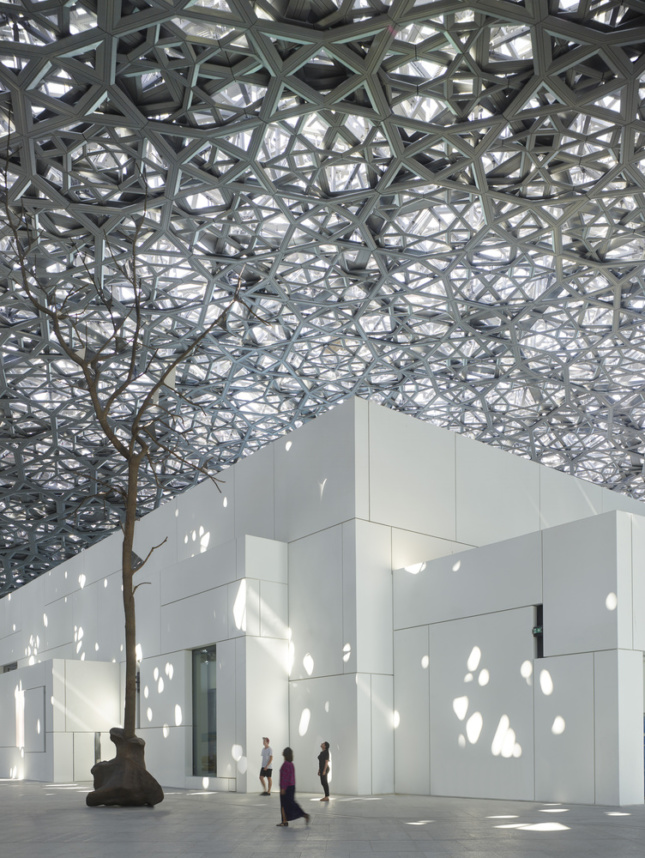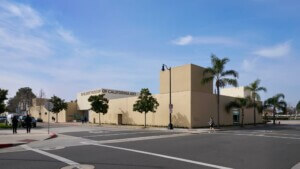A year after the Jean Nouvel–designed Louvre Abu Dhabi opened its doors in the Saadiyat Island Cultural District, a waterfront arts quarter with buildings from big-name architects, things aren’t entirely rosy.
The Austrian steel engineering conglomerate Waagner-Biro, responsible for building the intricately latticed, double-layered dome over the museum, has reportedly declared insolvency due to their involvement in the project. Late payments and inflated costs on the approximately $90 million Louvre offshoot have forced Waagner-Biro to sell its subsidiaries in hope of remaining solvent.
The 262-foot-wide dome is made up of almost 8,000 interlocking metal octagons, layered over each other in reference to the mashrabiya, a traditional Islamic sunscreen that shades while allowing air to pass through. The museum below the dome is a loose-knit collection of 23 gallery spaces that together form a layout closer to an open-air market typology than a traditional museum space. Nouvel has described the dome as “an oasis of light”—during the day, the sun filters in from above like starlight, and at night, the museum below causes the roof to glow from within.

Waagner-Biro began in 1854 as a locksmith but has grown into a major player in architectural steel installation; the company constructed the spiraling roof of the Great Court in London’s British Museum and the dome of the Reichstag in Berlin. Unfortunately, after costs rose during the Louvre Abu Dhabi dome installation, Abu Dhabi refused to pay and forced Waagner-Biro to shoulder the difference.
The firm’s daughter company, SBE Alpha AG, was declared insolvent on October 23 of this year and its financial woes have spread to the rest of the 1,300-employee company. Waagner-Biro has already sold its Waagner-Biro Austria Stage Systems AG subsidiary to Austrian entrepreneur Erhard Grossnigg for restructuring; the offshoot has handled stage engineering work at the Sydney Opera House and Berlin’s State Opera House in the past.
While it remains to be seen if Waagner-Biro will be able to emerge from insolvency, that hasn’t been the only piece of bad news for the Louvre Abu Dhabi this week.
Salvator Mundi, a portrait of Jesus allegedly painted by Leonardo da Vinci and sold for a record-breaking $450 million last November, has reportedly been feared as lost. Saudi Arabia’s Crown Prince Mohammed bin Salman purchased the painting with the intent of displaying it in the Louvre Abu Dhabi, but the September 18 unveiling date has passed without a peep from the prince. The fate of Salvator Mundi, whether it will be put on display in the new Louvre, or how it’s being cared for are now only known to the Saudi royal family.











